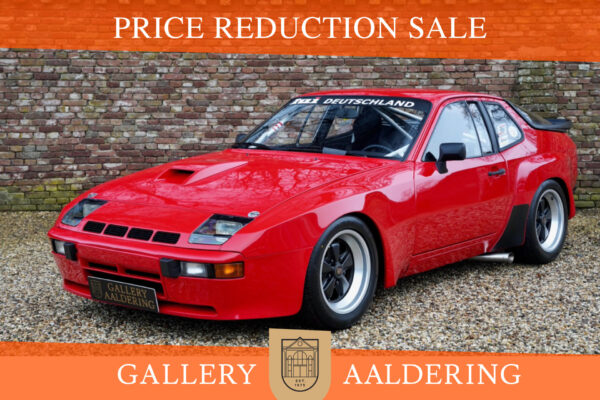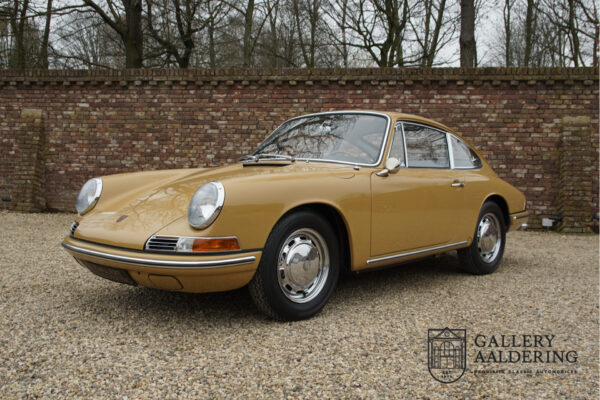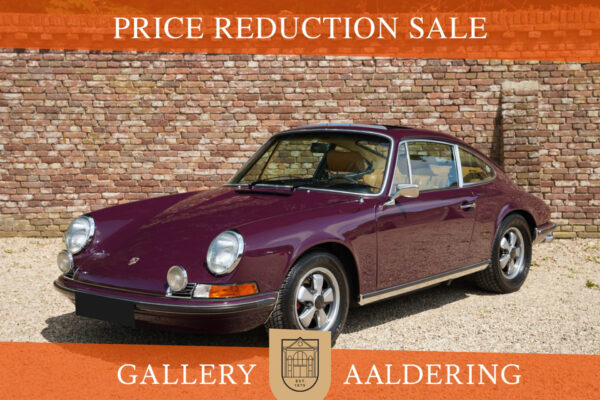How it once started
The first Porsche car came on the market in 1948, but the history of Porsche goes back much further. Ferdinand Porsche was born on September 3, 1875. He was the founder of the Porsche brand. Ferdinand Porsche was a brilliant engineer, that is beyond any doubt even today. What many people don’t know is that he was the inventor of the hybrid car, which he developed back in 1898.
Ferdinand Porsche
Ferdinand founded the company in 1931 that would grow into the Porsche we know today. Another fact that is inextricably linked to Porsche’s history is that he was also a member of the Nazi party. He was known as Hitler’s favorite engineer. In 1934 he was commissioned by Hitler to develop a car for the people. His design was further developed and eventually resulted in the Volkswagen Beetle. In 1945 Ferdinand Porsche was arrested in France, he was seen as a war criminal. His son Ferry, who was with him at the time, was also arrested but released shortly afterwards. As you might expect, this is not a chapter in the long history of the Stuttgart brand that they are proud of or have on sale. The exact facts are not crystal clear to this day. What is certain, however, is that Porsche made use of forced laborers during the war. The exact numbers cannot be determined. According to the Reading of the Porsche family, Ferdinand was left in jail because the French government wanted to force him to cooperate with Renault, which to this day is largely in the hands of the French state. What is certain is that Ferdinand was released in 1948 and found not guilty by the French court.
After the war
Ferry Porsche returned to Gmund and tried to make the best of it. He developed the Porsche 356 that saw the light of day in 1948. When people asked Ferdinand Porsche after his release what he thought of his son’s designs, he indicated that he himself would not have done anything else. In 1949 the Porsche family returned to Stuttgart to start production of the Porsche 356. In the following 17 years, Porsche would build no fewer than 78,000 copies of the Porsche 356. The company was able to grow quickly because it was financially on roses. Porsche received a royalty from Volkswagen for every Beetle sold. In the end, Volkswagen sold more than 20 million Beetles, so those amounts rose considerably. That wonderful financial basis mainly benefited Ferdinand’s son Ferry because in 1950 he suffered a stroke from which he never fully recovered. Ferdinand Porsche eventually died at the age of 75 on January 30, 1951.
Ferry Porsche takes the lead
Ferry Porsche took full control of the company and, in the decades that followed, expanded the small company responsible for the 356 into an automotive powerhouse with victories on virtually every racetrack in the world. Mostly, the cars used were based on the technology found in the Porsche 356. However, it was noticed in Stuttgart that more was needed to make a difference in today’s market. The 356 was further developed a number of times, but the stretch was a bit off. At the time, Porsche’s thought was that it would be a good idea to position a model above the 356 and to continue to offer the 356 as a cheaper alternative. That model eventually became the Porsche 911. The car was introduced in 1963 as 901. Peugeot dived on top of it and indicated that they were the only car brand allowed to sell cars with a 0 in the middle of the three numbers. Porsche complied with the request and renamed the 901 911, a legend was born.
The Porsche 911
The 911 was a resounding sales success from day one. Porsche was therefore able to compete for victory in even more different racing classes. Porsche’s palmares kept getting longer, but what was still missing was a total victory over La Sarthe, Le Mans had to be won. Who better to help Porsche to victory than the absolute king of the 6-cylinder boxer: Hans Mezger? The Porsche 917 was developed under the inspiring leadership of Ferdinand Piëch, grandson of Ferdinand Porsche ed. In the first year, the 917 did not yet compete for the overall victory, but in 1969 the time had come: Porsche won Le Mans and would repeat it many times in the years and decades that followed.
Ultimately, Ferry Porsche remains at the helm of the company until 1989. He propels the company to great heights and personally supervises the development of new models and new versions. He is a real engineer with a love for technology. He eventually died in 1998 74 days before the 50th anniversary of Porsche. Around that time, Pors is doing considerably less well
che and drastic decisions have to be made. The 996 generation of the 911 is still seen by many as the ugly duckling of the 911 series, but is actually an important reason that Porsche still exists today. The front of the 996 and the first generation Boxster are identical. Because so many parts are interchangeable, Porsche can produce the cars at a much lower cost and the company’s profitability improves rapidly. It soon becomes apparent that the Boxster is used as a stepping stone to a 911 for many people. However, many people still find the 911 too much sports car to use every day and the car is also not suitable for going out with a family. Therefore, something drastic has to be done. What Porsche needs is a real top seller, a car that is so successful and so profitable that Porsche can continue to build the 911.
Everything has to be different, the Porsche Cayenne
In 2001 Porsche shocked the world with the Cayenne. Entire tribes are falling over each other to tell them how ugly they think the Cayenne is. However, the buyers do not care, they order the new SUV en masse. The Cayenne Turbo even has 450 hp in 2001, a number that will only continue to increase in the following years. It has been a resounding success and the Cayenne is single-handedly responsible for the fact that we can still go to a Porsche dealer to order a 911 today. So if you meet a “true Porsche enthusiast” who doesn’t like the Cayenne and Macan, you know that person has zero knowledge.
The decades since have proved very successful for Porsche. The Cayenne gets successors and a little brother in the form of the Macan, which is largely based on Audi Q5 technology. In addition, Porsche introduces the Panamera, which now also represents a fixed value in the line-up from Stuttgart. Finally, in 2019 Porsche will surprise the world with the fully electric Taycan. Hybrid Porsches have long ceased to be news and are often also the top models in Cayenne Turbo S E-Hybrid and Panamera Turbo S E-hybrid form, but a fully electric Porsche? Is the world ready for that? Of course Porsche has done its homework well and the Taycan is also a resounding sales success. The Taycan sells even better than the Panamera.
What is the price of the Porsche Taycan?
Porsche pays no price at all for the Taycan, it is a huge sales success. The future looks bright for Porsche, the sports car enthusiasts can still buy pure sports cars that are better than ever thanks to the profitability of the Cayenne, among others, and the lover of the most futuristic High-tech can buy his very old Tesla Model S for a Trade in a really desirable car and get into a Taycan.
You will not easily find the latter in our stock, but we always have a very extensive range of various air-cooled Porsches in stock.
Porsche 924 Carrera GTS “Matching Numbers” PRICE REDUCTION!

1981€176.500,-
Porsche Super Export 329 “Zugmachine” PRICE REDUCTION!

1962€21.500,-
Porsche A133 PRICE REDUCTION!

1956€19.500,-
Porsche 108 Junior “Ackerschlepper”

1961€19.950,-
Porsche 911 Urmodell 2.0 SWB “Passionate restoration”

1965€199.500,-
Porsche 996 GT3 RS

Video2004€264.500,-
Porsche 912 coupé “Factory 5-speed”

1969€79.950,-
Porsche 356 Pre-A 1500 Convertible Reutter

1954€299.500,-
Porsche 911 Urmodell 2.4 E Ölklappe PRICE REDUCTION!

1972€119.500,-
